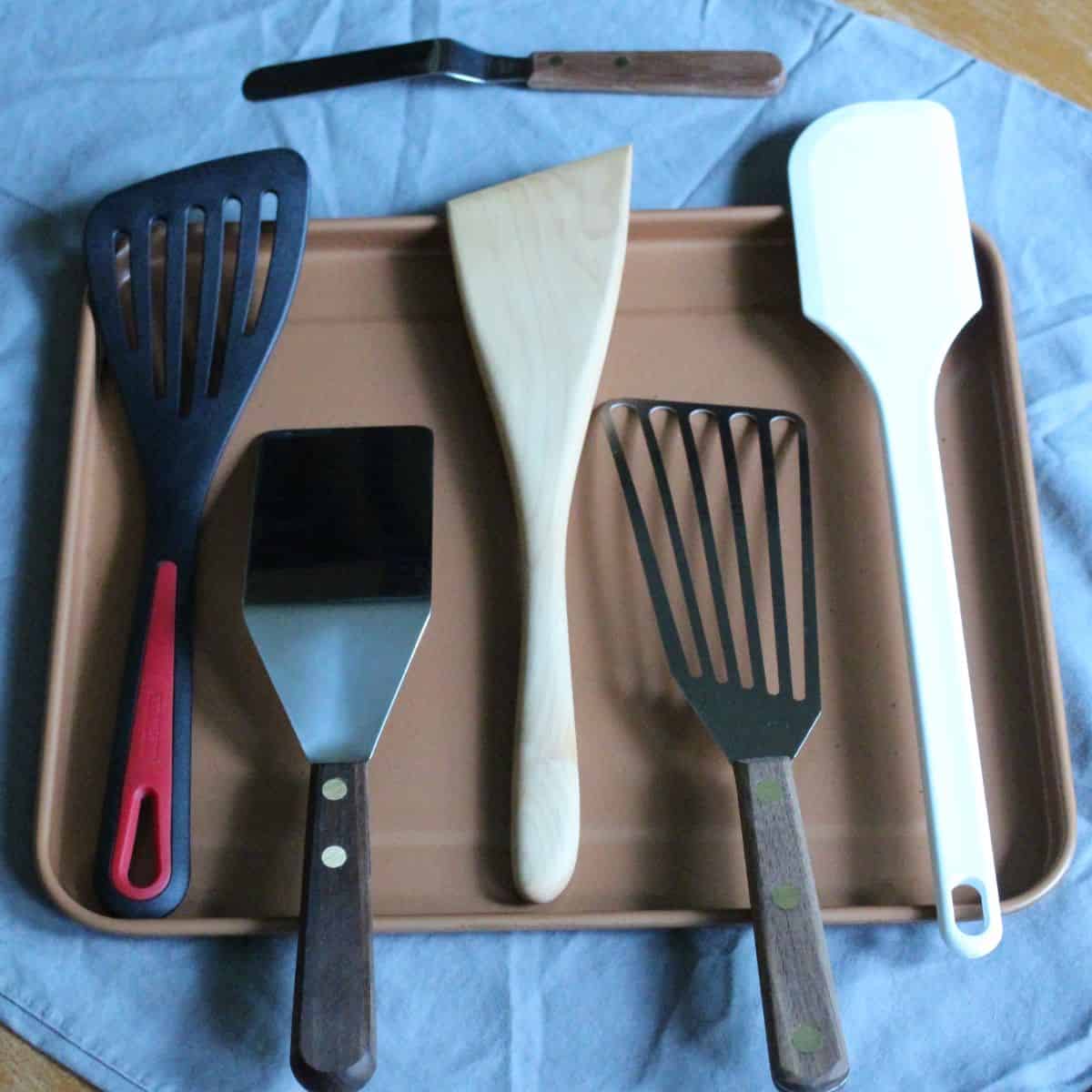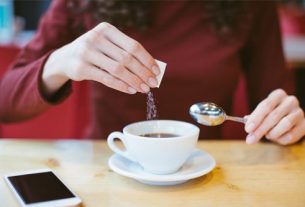In the bustling world of cooking, amidst sizzling pans and tantalizing aromas, there is one humble hero that holds the power to transform culinary creations – the spatula.
This unassuming tool, with its myriad shapes and sizes, has become an indispensable companion for chefs and home cooks alike.
From gracefully flipping a delicate pancake to expertly scraping every last morsel from a mixing bowl, the spatula is a versatile ally in the quest for culinary perfection.
Join us as we uncover the secrets behind this unassuming yet essential kitchen instrument, exploring its origins, its many uses, and the materials that shape its existence.
Step into the realm of the spatula and discover a world of endless possibilities.
what is a spatula
A spatula is a kitchen tool used for flipping, turning, folding, mixing, spreading, serving, sautéing, and scraping food products.
It comes in different shapes and sizes for various purposes, such as spreader spatulas for applying sauces and soft toppings, scraper spatulas for stirring and scraping sticky ingredients, and turner/flipper spatulas for flipping and turning food while cooking.
Spatulas can be made from materials such as steel, aluminum, and wood.
Key Points:
- A spatula is a versatile kitchen tool used for various cooking tasks including flipping, turning, folding, mixing, spreading, serving, sautéing, and scraping food products.
- Different shapes and sizes of spatulas are available to serve different purposes, such as spreader spatulas for applying sauces and soft toppings, scraper spatulas for stirring and scraping sticky ingredients, and turner/flipper spatulas for flipping and turning food while cooking.
- Spatulas can be made from different materials including steel, aluminum, and wood.
what is a spatula – Watch Video
💡
Pro Tips:
1. The word “spatula” actually originated from the Latin word “spathula,” meaning a small sword or spathe, which was a type of blade used in ancient times for various purposes.
2. In ancient Egypt, spatulas were often made from ivory or fine wood. They were used not only for cooking but also as cosmetic tools for applying makeup, especially around the eyes, as early as 1500 BCE.
3. While most people associate spatulas with flipping pancakes or spreading icing, there are actually specialized spatulas designed for specific purposes. For instance, a fish spatula has a thin, flexible, and angled blade that makes it ideal for turning delicate fish fillets without damaging them.
4. Spatulas have played a crucial role in scientific research and lab work for centuries. In chemistry, a microspatula is a stainless-steel spatula with a flat, narrow blade that is used for transferring small amounts of solid chemicals during experiments.
5. Ever wonder why many spatulas have a flat edge on one side and a serrated edge on the other? The serrated edge is actually intended for cutting through food, such as brownies or lasagna, once it’s been lifted or removed from a pan. It’s a convenient feature that allows for easy portioning without the need for additional utensils.
1. Definition Of A Spatula And Its Common Use In Cooking
A spatula is a common cooking tool used for flipping food in a frying pan. It is an essential utensil in any kitchen, primarily used for turning and flipping food items during the cooking process. The primary purpose of a spatula is to ensure even cooking by providing a means to flip and turn food without damaging its shape or texture.
Typically, a spatula consists of a flat, usually squarish piece made of plastic or metal attached to a straight handle. This flat piece is designed to slide under food items, allowing the cook to effortlessly lift and flip them. Spatulas can also be referred to by other names such as tossers, turners, flippers, or fish slices, showcasing their versatility in the culinary world.
Different Names And Variations Of Spatulas
Spatulas are versatile kitchen tools that come in various shapes and sizes to meet different cooking needs. The basic design consists of a flat piece attached to a handle, but there are variations tailored for specific purposes. Some spatulas have slots or holes on the flat piece, allowing excess oil or liquid to drain from the food. These types are commonly used for delicate ingredients like fish or eggs.
In addition to the traditional spatula, there are other specialized types designed for specific culinary tasks. Spreader spatulas are ideal for applying sauces and soft toppings, ensuring an even distribution across bread or other ingredients. Scraper spatulas are useful when stirring and scraping sticky or wet ingredients, making it easier to clean bowls and utensils. Turner or flipper spatulas, as the name suggests, are perfect for flipping and turning food items while cooking to ensure that both sides are evenly seared or cooked.
Types Of Spatulas For Mixing And Scraping Batter
Spatulas are versatile tools, not just for flipping food in pans but also for mixing and scraping batter. When it comes to baking, spatulas made of pliable materials, like silicone, are ideal. These flexible spatulas effortlessly slide along the surface of the bowl, ensuring thorough mixing without leaving any residue behind.
Additionally, the pliable nature of silicone spatulas allows for easy maneuvering around the folds and edges of the bowl, resulting in a consistent blend of ingredients. Using silicone or other heat-resistant materials emphasizes safety when dealing with hot mixtures or scraping sticky batter.
Features Of A Safe And Effective Kitchen Spatula
A kitchen spatula should possess certain characteristics to ensure both safety and effectiveness.
Firstly, the handle of the spatula should be long enough to keep the cook’s hands safe from heat or potential splatters. This allows for comfortable and secure handling during the cooking process.
Secondly, the handle should be rigid enough to provide proper control over the food being cooked. The blades of spatulas need to be flexible and thin to safely turn food without breaking it or causing any damage. This balance ensures that the spatula offers the necessary control while being gentle on delicate ingredients.
Lastly, the flat piece of the spatula should be made of a material that is safe for cooking and easy to clean. Spatulas are commonly made of metal, plastic, wood, or heat-resistant silicone, each having its own advantages and limitations. For instance, metal spatulas are durable and excellent heat conductors, while silicone options are non-stick, easy to clean, and heat-resistant.
- The handle should be long enough to protect the cook’s hands from heat and splatters.
- The handle should be rigid to provide control.
- The blades should be flexible and thin to avoid damage to the food.
- The spatula should be made of a material that is safe for cooking and easy to clean.
A kitchen spatula should possess certain characteristics to ensure both safety and effectiveness.
Materials Used In Making Spatulas
Spatulas can be made from a variety of materials, each with its own set of benefits. Here are some popular options:
-
Metal spatulas: These are often made from stainless steel and are known for their durability and high heat conductivity. They can withstand high temperatures without warping or melting. Metal spatulas are great for precise turning and flipping of delicate food items.
-
Plastic spatulas: These are lightweight and more affordable. They are also less likely to scratch non-stick surfaces, making them suitable for use on pans with coatings. However, caution should be exercised with high heat, as plastic spatulas can melt or warp under extreme temperatures.
-
Wooden spatulas: These have been used for centuries and are preferred when working with non-stick surfaces. They are gentle on cookware, preventing scratches and maintaining the integrity of the pan. However, they may not handle hotter temperatures well and require extra care to avoid absorption of odors or flavors.
-
Heat-resistant silicone spatulas: These have gained popularity due to their versatility. They are non-stick, flexible, and can withstand high temperatures. Silicone spatulas are particularly useful for baking and cooking tasks where low conductivity and resistance to heat are essential.
Remember to choose a spatula material that suits your specific cooking needs and preferences.
Sizes And Blade Variations Of Spatulas For Different Food Items
Spatulas come in different sizes to accommodate various food items.
-
Shorter blades are ideal for small ingredients, such as eggs, small fish fillets, or pancakes. These spatulas provide greater precision when flipping delicate items, ensuring they cook evenly without falling apart.
-
On the other hand, longer blades are suitable for larger pieces of meat or fish, allowing for easy handling and flipping of more substantial items.
Additionally, there are blade variations available, such as spatulas with slots or holes for draining excess oil or liquid. These variations are particularly useful when dealing with greasier foods, providing a means to remove excess oil and prevent the food from becoming soggy.
Multifunctional Uses Of Spatulas In Cooking
Spatulas have evolved beyond their traditional role as a flipping tool and have become multifunctional in the kitchen.
In addition to flipping and turning food items, spatulas are used for tasks such as folding ingredients in delicate recipes, mixing batter, spreading sauces and toppings, serving dishes, sautéing vegetables, and scraping pans or bowls to ensure no ingredients are wasted.
With the right spatula, cooks can execute a wide range of cooking techniques, making it an indispensable tool in any kitchen.
Different Types Of Spatulas For Various Purposes
Spreader spatulas are specifically designed for applying toppings and sauces with precision. They ensure an even distribution over bread, cakes, or other dishes.
Scraper spatulas, on the other hand, are used for stirring and scraping sticky or wet ingredients. They allow cooks to work with thick batters or mixtures without leaving any behind.
Turner or flipper spatulas serve the purpose of flipping and turning food items while cooking. Their long handle keeps the cook’s hands safe from heat. These spatulas are used to flip and cook food evenly on both sides, ensuring that the food item is perfectly cooked.
Each type of spatula serves a unique purpose and provides the necessary tools for specific cooking techniques.
Characteristics Of Turner Spatulas For Flipping And Cooking Food
Turner spatulas, also known as flipper spatulas, are specifically designed for flipping and cooking food items. They have a long handle that offers heat protection and ensures safe and precise handling during cooking. The handle is often made of heat-resistant material that stays cool to the touch, minimizing the risk of burns.
The blades of turner spatulas are thin and flexible, allowing them to slide easily under delicate foods like eggs or thin fish fillets without breaking them. The flexibility of the blade prevents damage to the food item while ensuring an even flip or turn.
To achieve optimal results when cooking, turner spatulas should have a balance between flexibility and sturdiness. This enables cooks to have better control over the food item and ensures even cooking on both sides.
Materials Used In Making Turner Spatulas
Turner Spatulas: A Guide to Materials and Benefits
Turner spatulas are essential tools in the kitchen, serving multiple functions from flipping and turning food items to mixing and scraping batter. When it comes to choosing the right turner spatula, the material plays a crucial role. Here, we will explore the various materials commonly used for turner spatulas, their unique characteristics, and the benefits they offer.
Steel and Aluminum: Durability and Heat Conductivity
Steel and aluminum are popular choices for turner spatulas due to their durability and excellent heat conductivity. These materials can withstand high temperatures without warping or melting, making them suitable for flipping and cooking food over heat sources. Whether you’re searing a steak or flipping pancakes, steel and aluminum spatulas are reliable tools that can handle the heat.
Wood: Gentle on Cookware
Wooden turner spatulas are gentler on cookware, especially non-stick pans. They help maintain the integrity of the non-stick coating by minimizing scratches. However, it’s important to note that wooden spatulas should not be used with extremely high heat, as they can char or burn.
Silicone: Heat Resistance and Flexibility
In recent years, silicone turner spatulas have gained popularity for their heat resistance, flexibility, and non-stick properties. These spatulas are suitable for use with delicate cookware, preventing scratches and providing exceptional maneuverability. Whether you’re cooking on a non-stick surface or using fragile porcelain dishes, silicone spatulas are a versatile choice.
Choosing the Right Material
When selecting a turner spatula, it’s crucial to consider personal preference and specific cooking needs. Each material has its own advantages, and choosing the right one will enhance your cooking experience while ensuring longevity and safety. Whether you prefer the durability of steel and aluminum, the gentleness of wood, or the versatility of silicone, there is a turner spatula to suit your needs.
“A good turner spatula is an extension of the cook’s hand, offering reliability and precision in the kitchen.”
In summary, turner spatulas are indispensable tools that make cooking more efficient and enjoyable. With their ability to flip, turn, mix, and scrape, they serve multiple functions. Available in various shapes, sizes, and materials, turner spatulas are designed to suit diverse cooking needs. The choice of material, whether it be steel, aluminum, wood, or silicone, allows you to customize your cooking experience, ensuring the best results every time. So, whether you’re sautéing vegetables, serving a dish, or flipping a pancake, a turner spatula is an essential utensil that helps you create culinary masterpieces with ease and precision.
Bullet Points:
- Steel and aluminum spatulas offer durability and heat conductivity.
- Wooden spatulas are gentle on non-stick cookware but should not be used with extremely high heat.
- Silicone spatulas provide heat resistance, flexibility, and non-stick properties.
- The choice of material depends on personal preference and specific cooking needs.
💡
You may need to know these questions about what is a spatula
What is the difference between a spatula and a turner?
The key distinction between a spatula and a turner lies in their functionality and design. While turners are known for their durability, spatulas are primarily used for sautéing, mixing, and spreading. Turners feature a wide blade surface that is ideal for flipping foods, whereas spatulas have a narrower surface that suits tasks beyond flipping, including culinary techniques like stirring and spreading ingredients. In summary, turners prioritize flipping efficiency, while spatulas offer versatility for a range of cooking activities beyond flipping.
Is it a spatula or flipper?
When it comes to the debate between spatula or flipper, it is important to consider the context of American English. In this language variant, the term spatula is commonly used to describe various broad and flat utensils. Specifically, in the culinary realm, spatula refers to a turner or flipper, which is utilized for lifting and flipping food items like delicious pancakes or delicate fillets while they are being cooked. So, whether you prefer to call it a spatula or a flipper, this versatile kitchen tool remains an essential for any cooking enthusiast.
Is a pancake turner a spatula?
Yes, a pancake turner can be considered a type of spatula. While spatula is a more general term, a pancake turner falls under this category. A pancake turner, like other types of turners or spatulas, is designed with a broad, flat head and a handle, making it perfect for flipping pancakes or any other food items that require turning. So, if you’re looking for a spatula to flip your pancakes, a pancake turner is an ideal choice.
What is a spatula actually called?
Did you know that a spatula actually goes by many different names? While some may know it as a “spatula,” others may refer to it as a “fish slice,” “flipper,” “tosser,” “scraper,” or even a “fish slice” in certain parts of Britain. The variety of names highlights the diverse ways people use this versatile kitchen tool while preparing different types of food.
Reference source
https://en.wikipedia.org/wiki/Spatula
https://www.wasserstrom.com/blog/2018/10/23/spatula-history/
https://www.nationalgeographic.com/culture/article/tools-5-things-you-didnt-know-about-spatulas
https://en.wikipedia.org/wiki/Spatula



